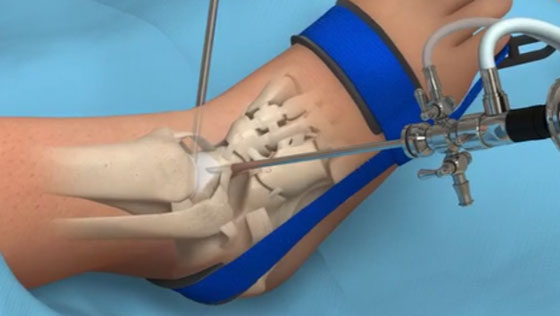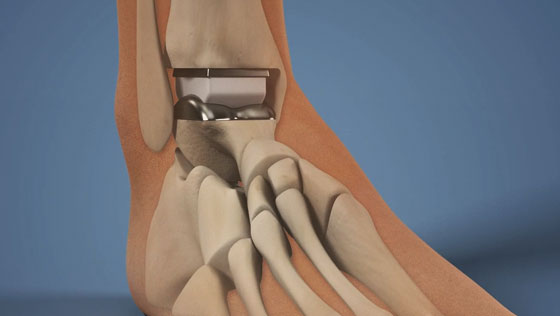What is Bunionectomy?
A bunion (also known as hallux valgus or hallux abducto valgus) is a deformity of bone that forms at the base of the big toe as a result of a misaligned joint. Bunionectomy (or bunion surgery) is a surgical procedure performed to remove the bunion and realign the joint.
Key statistics about Bunionectomy
- 23% of individuals aged 18-65 are affected by bunions[1]
- Approximately 36% of individuals over the age of 65 are affected by bunions[1]
- Bunions are more prevalent in women than in men[1]
- In the United States, approximately 171,000 bunionectomies are performed each year[2]
Expert Insights
How are bunions treated? - J. Carr Vineyard, MD
Anatomy
The big toe is formed by two joints. The larger of the two joints is called the metatarsophalangeal (or MTP) joint, which is formed by the union of the hallux and the first metatarsal.

Why is Bunionectomy performed?
Bunionectomy is performed to relieve the pain caused by a bunion, which forms at the MTP joint, and occurs when the joint becomes misaligned. The hallux and tip of the big toe shifts toward the second toe, while the metatarsal bone moves toward the inside of the foot. This causes the bunion to form, resulting in redness, pain, inflammation, and limited joint mobility.
Who needs Bunionectomy?
Bunions are due to inherited foot structure, inflammatory disease such as rheumatoid arthritis, or a result of foot mechanics: the pressure placed on the foot due to the way an individual walks.
Bunionectomy is necessary to address painful bunions that impact foot function and cannot be repaired or treated with nonsurgical measures.
How is Bunionectomy performed?
- The surgeon will make an incision and access the MTP joint.
- The bunion is removed.
- A small wedge of bone is also removed from the first metatarsal in order to realign the joint, and the bone is held in place with screws or other fixation devices.
- If necessary, tendons or ligaments will be shortened or lengthened to properly realign the MTP joint.
- Finally, the incision is closed with sutures.

What are the risks of Bunionectomy?
Potential risks associated with bunionectomy may include:
- Infection
- Nerve or blood vessel damage
- Stiffness of the big toe
- Failure of the bone to heal
- Recurrence of the bunion
How long does it take to recover from Bunionectomy?
-
24 hours after surgery
Physical therapy will begin and pain killers may be prescribed. -
1-3 days after surgery
Most patients are discharged from the hospital. The foot will be in a protective boot or cast and crutches will be provided to keep weight off of the affected leg. -
1 week after surgery
Weight should be kept off the affected foot, which should be elevated and iced regularly. -
2 weeks after surgery
Any non-dissolvable sutures and staples are removed and bruising and swelling begin to subside. -
4-6 weeks after surgery
Most patients will begin to place weight on the affected foot. -
6-12 weeks after surgery
Most patients are able to resume most daily activity. -
4-6 months after surgery
Most patients are recovered from bunionectomy, though it may take some individuals up to a year to fully heal from the procedure.
What are the results of Bunionectomy?
Bunionectomy provides complete or nearly complete pain relief for most patients, and the procedure has a high degree of patient satisfaction.
Find an Orthopedic Doctor in Your Area




